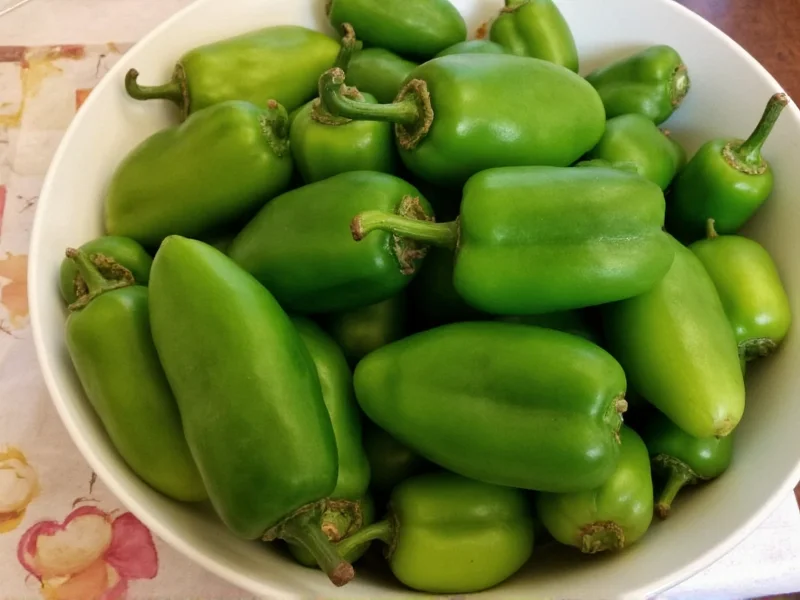The Scoville scale measures the pungency or "heat" of chili peppers and other spicy foods, expressed in Scoville Heat Units (SHU). Understanding where jalapeños fall on this scale helps home cooks, food enthusiasts, and culinary professionals make informed decisions about their spice usage.
What Is the Scoville Scale?
Developed by pharmacist Wilbur Scoville in 1912, the Scoville Organoleptic Test originally measured heat through human taste panels. Today, high-performance liquid chromatography (HPLC) provides more precise measurements of capsaicinoids—the compounds responsible for pepper heat. The results are still converted to Scoville Heat Units for consumer understanding.
Jalapeño Heat Range Explained
While jalapeños consistently fall between 2,500-8,000 SHU, several factors influence their actual heat level:
- Maturity: Riper red jalapeños often contain more capsaicin than greener ones
- Growing conditions: Soil composition, climate, and water stress affect heat production
- Individual variation: Even peppers from the same plant can vary in heat
- Seed and membrane content: Most capsaicin resides in the white pith and seeds
Comparing Jalapeño Heat to Other Common Peppers
| Pepper Type | Scoville Heat Units (SHU) | Relative Heat Level |
|---|---|---|
| Bell Pepper | 0 SHU | Mild |
| Jalapeño | 2,500-8,000 SHU | Mild-Medium |
| Serrano | 10,000-23,000 SHU | Medium-Hot |
| Habanero | 100,000-350,000 SHU | Very Hot |
| Ghost Pepper | 855,000-1,041,427 SHU | Extremely Hot |
Practical Implications of Jalapeño Heat Level
Understanding jalapeño scoville units range helps in culinary applications. At 2,500-8,000 SHU, jalapeños provide noticeable heat without overwhelming most palates. This makes them ideal for:
- Adding subtle spice to salsas and guacamole
- Stuffing with cheese or other fillings
- Creating mild to medium hot sauces
- Adding flavor dimension to Mexican and Southwestern dishes
For those sensitive to spice, removing seeds and white membranes significantly reduces heat while maintaining jalapeño flavor. Conversely, leaving these parts intact maximizes the jalapeno pepper heat level scoville measurement in your dish.
Why Jalapeño Heat Varies So Much
The wide jalapeno scoville units range (2,500-8,000 SHU) exists because capsaicin production responds to environmental stressors. When jalapeño plants experience:
- Drought conditions
- Temperature fluctuations
- Nutrient deficiencies
- Pest pressure
...they often produce more capsaicin as a defense mechanism. This explains why two jalapeños from the same grocery store can have noticeably different heat levels—a phenomenon known as "jalapeño roulette" among spice enthusiasts.
Measuring Your Own Jalapeños
While professional lab testing provides exact scoville heat measurement for jalapenos, you can estimate heat through:
- Visual inspection: More striations (white lines) often indicate higher heat
- Smell test: Stronger aroma may suggest more capsaicin
- Taste testing: Start with a tiny piece of membrane (never consume large amounts of unknown peppers)
Remember that individual tolerance varies significantly when comparing jalapeno heat to other peppers. What seems mild to one person might be uncomfortably hot to another.
Historical Context of Jalapeño Cultivation
Jalapeños originated in Mexico and were named after Jalapa, the capital of Veracruz state. Unlike many heirloom peppers, modern jalapeños have been selectively bred for consistent flavor and moderate heat—explaining their reliable position on the scoville scale for jalapenos. This breeding has made them one of the most widely consumed chili peppers globally, appearing in everything from nachos to poppers to commercial hot sauces.











 浙公网安备
33010002000092号
浙公网安备
33010002000092号 浙B2-20120091-4
浙B2-20120091-4